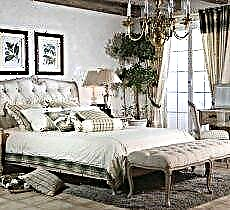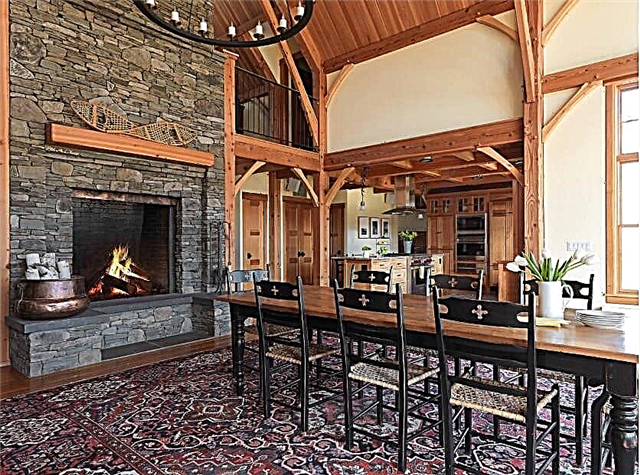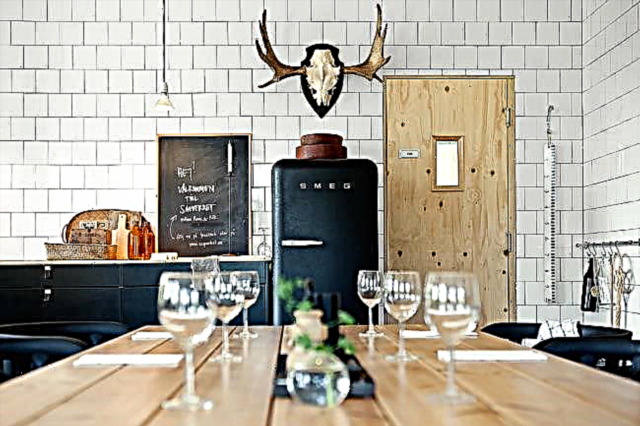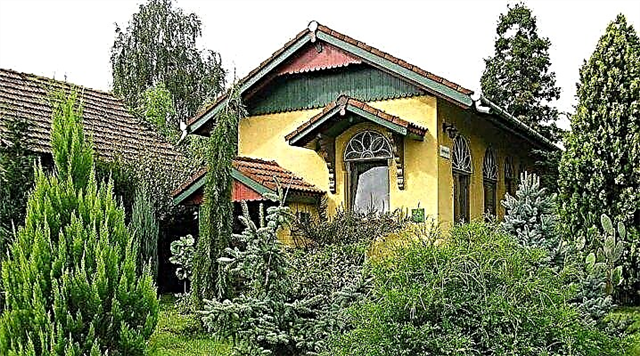
Coniferous plants have long occupied an honorable place in landscape design. They are quite unpretentious, look great and smell, purify the air and remain green all year round. In addition, they are perfectly combined with trees of other species, flowers, stones or a lawn, which allows you to create a huge number of different compositions. The most popular species are flower beds, rockeries, alpine hills and hedges, although some prefer to plant solitary trees or even grow dwarf bonsai trees.
On the modern market an impressive assortment of conifers of different species, colors and sizes is presented. Due to this, it is possible to ennoble evergreens with not only a park or vast lands, but also a rather modest corner of a regular garden plot.

Features of the composition
In landscape design, as a rule, specially grown dwarf species of plants are used, which are expensive, therefore it is better to start with a sketch of the future composition on paper. One of the primary factors is undoubtedly the size of the area allocated for planting, as well as the features of the terrain. Despite the well-known unpretentiousness, it is best to plant conifers on the western or eastern side of the site.
A flat, flat area is suitable for a rockery or flowerbed, and a gentle slope or artificial pond will be an ideal base for an alpine hill.


When creating a layout, you should pay attention to the geometry of the planned composition. Elements must be harmoniously combined in shape and size. As a rule, the largest are the semantic center and are located in the middle or at the very beginning of the composition. The difference in heights and shapes is best arranged in descending order: from larger and more massive to the outskirts, avoiding sudden jumps.


You should pay attention to the choice of colors. Conifers can differ quite a lot from each other, providing a fairly wide palette both inside the original green color (from light green to dark blue-green tones), and having a variety of mixed shades - yellowish, blue or purple. To prevent the canvas from getting clumsy, designers advise:
- choose no more than two colors per composition of three elements,
- on the five-element composition take three colors.
- if there are more components, it is recommended to arrange them in groups according to color matching.
However, the main principle in constructing a composition both in form and in color is the desire for reasonable minimalism, the avoidance of excessive variegation and excessive diversity.

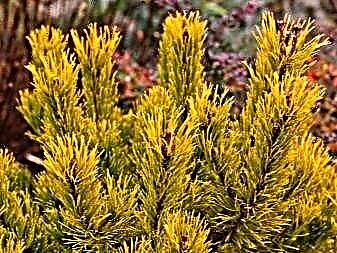

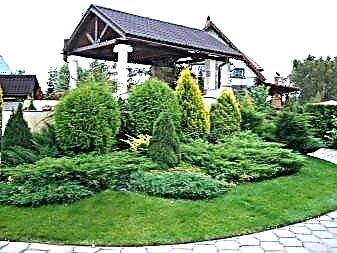
An important point is the functionality of the future landing. If the goals are purely aesthetic - decorating the corner of a summer cottage or wanting to try your hand at landscape design, then the best choice would be to create a rockery, flowerbed or alpine hill. More practical options are mixborders or hedges, helping not only to protect your territory from strangers, noise and dust, but also to originally zonize the space.


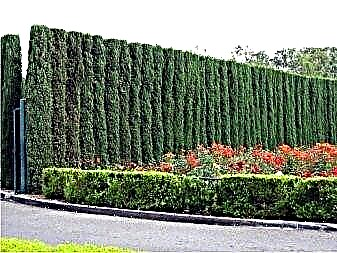
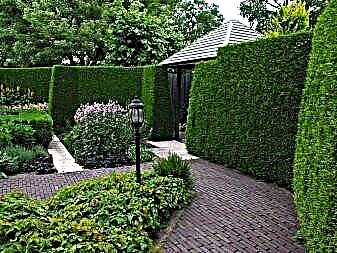
Rockery is a gently sloping garden without pronounced differences in tiers, which are decorated with dwarf trees, stones, bushes, flowers and small pebbles (most often gravel). There are three types of rockeries:
In English, preference is given to herbs, bushes and creeping conifers. The Japanese emphasize the pattern of stones and gravel, occasionally diluted with greenery. European rockery is most common in the middle lane. Its semantic center, as a rule, is a vertical coniferous or oval conifer, around which other elements are placed - stones, creeping shrubs, spherical trees below.
The principle of creating an alpine hill is the same as that of a rockery - a combination of conifers with stones and other types of vegetation to create a miniature imitation of wildlife. but the alpine hill needs more light, and the cascading structure gives it charm. In such a composition, a pronounced tier and arrangement of elements in a descending manner are visible.
Particular attention should be paid to ensure that larger elements do not obstruct small ones during the review.


A flower bed with conifers will be an excellent option for decorating a small garden plot or a country cottage. Gardeners especially love this version of the composition because it can be placed at minimal cost on standard several hundredths.

The main types of flower beds are:
- A large flower bed, usually located on the outskirts of the site. In the foreground, the composition is supported by medium-sized shrubs and creeping species.
- A compact flowerbed, of which a mobile model is a subspecies, is located in a small area and is a miniature rockery. The composition also involves flowers and stones.
- The landscape flowerbed is styled as an untreated miniature coniferous forest in miniature. Raw stones, driftwood, and mosses are usually used for decoration.
- A symmetric flowerbed is planted from the center, where the tallest plant is located, descending through 1-2 plants of medium height to the lowest growth - creeping species of thuja and juniper.




Hedges and mixborders from coniferous arborvitae and juniper are gaining more and more popularity. Such a fence not only reliably protects the site from unwanted visitors, traps dust and exhaust fumes, but also looks invariably stylish and elegant. And from the dwarf species, small barriers can be planted, with the help of which it is convenient to zone the area or protect the flower beds.

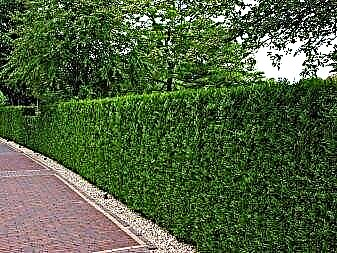

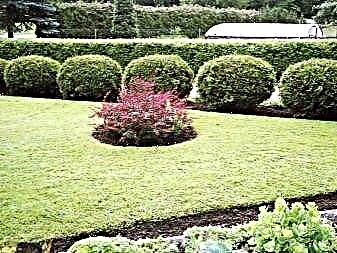
Which plants to choose?
Choosing conifers for the garden is not such a simple matter, having a number of secrets and subtleties. Despite their easy accessibility, you should not take branches or seedlings of wild pines and firs, as they will inevitably strive to restore their original height and size, destroying the harmony of the composition.
For decorative purposes, you need to buy specially grown coniferous varieties that have a compact size and a predictable direction of growth.
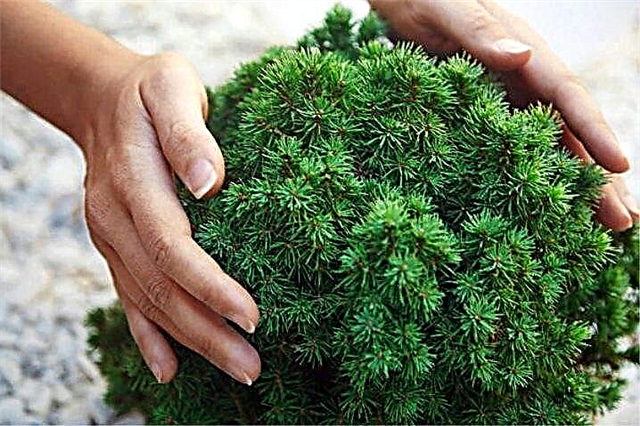
Also, one should not forget about the other elements of the planned composition - deciduous, flowers, hosts, which will affect the choice of color and size of conifers.

Species of conifers are conventionally divided into three large groups:
- tall
- medium height plants
- undersized.


Pine
Pine is one of the most common and famous trees. It is unpretentious to soil and climate, but requires a lot of space for its chic crown. There are many varieties of dwarf pines, including creeping mountain pine, which allows it to be used both in compositions and as a lonely growing tree. Among the popular ones, one can name a dwarf fluffy pine called Nana, a spherical twisted Vaterri and Panderos with long yellow needles.




This tree is widespread in the middle lane and is also quite picky about the conditions of detention. In landscape design, both ordinary spruce and its many varietal varieties are used. The most famous is the blue spruce, which, due to the unusual color of the needles, always looks beautiful and solemn. A tall hupsi spruce reaching a height of up to 15 m or a fluffy Serbian tree will also be a good choice for a large-scale composition.
More compact options are mid-sized Canadian conic spruce, frost-resistant tompa spruce, weeping inverse or dwarf species, for example, miniature pillow-shaped nidiformis, white-sided with a characteristic white rim of branches or Lomber's spruce.
The role of conifers in landscape design
- The popularity of conifers and shrubs is so great because of their advantages. Namely:
- almost all varieties tolerate a long stay in direct sunlight,
- many species of conifers retain their shape even without human intervention,
- thanks to powerful roots, trees and shrubs do not need constant watering,
- the plants exude a pleasant aroma,
- they are universal and can be planted as a single landing or as part of a group.
When choosing a suitable culture, you must pay attention to the following conditions:
- Clear choice of place for their landing.
- Features of weather conditions in a particular region.
- Type of landing. It can be a group or a single tree.
- The composition used on the land.
In addition, conifers of trees and shrubs secrete useful substances for the human body. The air in these areas contains more oxygen. An extensive root system prevents landslides, reduces the likelihood of washing off fertile soil with thawed snow.
Species of conifers
As described above, conifers and shrubs look great even in the cold season. It is in winter and autumn that the whole beauty of their appearance is revealed. Already at the end of October, they begin to stand out against the yellowed leaves of hardwood. And since there are a large number of species of these plants, you need to know which of them are most harmoniously suitable for creating landscape design.
Yew
This is a type of evergreen plants, the height of which in natural conditions can vary from 5 to 20 m. The bark often casts red. The crown always remains round and has a significant density. The needles constantly remain saturated green, dense. The length of the needles varies from 1 to 3 cm. The main difference between yew and other types of conifers is the absence of resin channels.
This feature will appeal to those who do not like coniferous aroma. The culture tolerates pruning and retains an artificially created shape for a long time. Usually found in rock gardens and topiary compositions. Yew breeds are perfectly combined with juniper, quince and western arborvitae.
Cypress
The most popular family in landscape design. A distinctive feature of this culture is that it can be used as a single landing. The object of admiration of the people around is the crown, which in shape resembles a pyramid. The tree tolerates pruning perfectly and maintains the created appearance for a long time. It is the correct pruning of branches that allows you to regulate the development and growth of the plant.
Varieties that have a low threshold for frost resistance are often exposed in pots outdoors in the summer. Those that can withstand a sharp drop in temperature can be used as hedges. The aroma exuded by cypress trees repels undesirable insects - flies and mosquitoes. This allows you to relax in the country without fear of being bitten.
Pine
These plants are considered universal. Especially popular among residents of the northern regions. Trees perfectly tolerate both prolonged drought and severe frosts. Count a huge number of species. The most popular is the dwarf variety, which is successfully used to create rock gardens and rockeries. In addition, pines can please with various shades of needles. Their color depends on the choice of variety.
- The main advantages:
- compact size
- dense crown, which allows you to grow plants that prefer partial shade,
- beautiful appearance
- a huge variety of varieties,
- resistance even to severe frosts,
- pleasant and healing aroma,
- unpretentiousness to soil.
Tall
Tall conifers are suitable for the vast territory of the infield. The main advantage of this culture is that it plays the role of a dominant. The rest of the plants will only complement it. The main drawback is fast growth. However, it can be slowed by pruning or pinching the branches. Artificially create a crown shape every year.
Of the most popular types, in landscape design is often used:
- Cedar. In the first few years after landing, the growth rate is very slow. The main feature of this coniferous tree is that it bears fruit with specific cones. In the garden you can use European, Siberian or Korean cedar. The tree loves sunlight very much. Therefore, they select a site with the maximum presence of sunlight during the day.
- Junipers, arborvitae and fir. Perfect for organizing hedges or placing at the very entrance to the living room.
- Spruce and pine.
The choice of a suitable species of tall coniferous trees always remains with the owner of the site. However, before landing it is better to consult with experts in landscape design.
Medium
Most suburban areas have a small territory. Therefore, planting large trees is not always appropriate.
That is why mid-coniferous species are often chosen, such as:
- Golden yew. A distinctive feature of this plant is the color of the needles. In a young seedling, it is always golden, and by the time of growing up it acquires a green-yellow hue. This tree perfectly develops in the conditions of the minimum natural lighting.
- Nana. This is a kind of fluffy pine. Her crown remains a characteristic dark green color throughout the year. The plant has an attractive appearance and is unpretentious in care.
- Yew berry. A feature of this culture is fruiting. Berries of a bright red hue appear on it, which give it a decorative look.
- Navaki. It is one of the varieties of bonsai. It usually grows in Japan. The main feature of the plant is its plasticity. If the crown needs to be trimmed, then it can be given almost any shape.
- Panderosis. This is a special type of coniferous tree with fluffy and long needles. The people often find an alternative name - "yellow pine." Initially, in natural conditions, it could be found only in the warm parts of the country. But, breeders were able to develop special varieties that perfectly tolerate minimum temperatures in the winter season.
Most often, such trees are planted to create a hedge on a personal plot. You can place them at the entrance to various buildings. Allowed to use for design compositions.
Dwarf
Such species are especially appreciated among owners of small land plots. This is not a complete list. However, it is enough to choose the suitable option for your own site.
Among the most common types and varieties can be distinguished:
- Spruce Konika. The main feature of the plant is its slow growth. There is a significant drawback. Spruce does not tolerate low temperatures. In order to prevent the death of culture in the winter, it is often grown in pots or covered with special materials when planting in open ground.
- Mountain pine. Another bright representative of coniferous dwarf tree species. She prefers to grow in a semi-shaded place and does not require close attention. Although the plant tolerates pruning perfectly, even without it it looks great. If you remove the side branches, the pine will begin to grow up. Her crown will form in the form of a hat. In appearance, this variety is very similar to Japanese bonsai.
- Negroes. This is a very attractive dwarf pine. Its feature is cones, which acquire a characteristic lilac hue at the time of ripening.From afar, they are sometimes confused with unusual flowers.
- Balkan pine. In the natural habitat, it sometimes reaches a height of 3 m. To avoid significant growth and create a beautiful crown shape, gardeners perform pinching of shoots.
- Velda. Belongs to the category of creeping conifers. If pruning is not done on time, then the shoots can grow up to 3 m in length.
- Pygmy. A pine tree that has dense and very beautiful needles. Needles are located on small branches, are thick and fixed in bundles.
How to compose compositions and choose neighbors
Despite the popularity of the idea of using conifers in landscape design, there is no consensus on their choice and composition. There are hundreds of variations that are used by masters throughout the country. You can create both artificially formed stands, and those that look like in the wild. Therefore, gardeners often find compromises, which allows not only to ennoble the plot, but also to create a natural landscape.
An ideal option is a location in which a conifer looks like it grew in nature. Despite this, it is constantly necessary to care for him. Without cropping, it can ruin the appearance of the plot. Accordingly, this situation and the variety of options led to the fact that during the planning does not apply any strict rules. For example, if you plant two spruce trees away from the buildings, then they will look relaxed. But, if they are placed at the gate, they will look quite natural.
It should also be remembered that the tree looks beautiful only from the south side.. On the north, it has less and shorter needles. An alternative option for choosing a plant is the choice of the one you like most. In this case, the care will bring not only beauty to the summer cottage, but also allow you to usefully spend your free time caring for the plantings.
Applications of conifers in the landscape
Coniferous plantations will be perfectly combined with other plants that the gardener plans to plant on his estate. They perfectly tolerate the neighborhood with shrubs and deciduous trees. And yet, some restrictions and rules when creating landscape design must be considered. After all, a fast-growing variety can spoil the whole look.
Rockery
Translated, this term means "stone garden." A feature of this design is that it is possible to safely realize any ideas. If it is properly equipped, then even the house will be completely transformed, and it will certainly become the highlight of the whole territory. This gives the impression that the owner has a great taste and understands the beautiful. In total, there are 3 most popular stylistic variations of the rockery: European, English and Japanese. In the first two cases, the emphasis is on planted plants. In the Japanese style, they prefer stones.
In addition to conifers, rockeries often use other cultures. They are selected based on the flowering period. For example, you can plant crocuses that bloom in spring. Change their tulips. And in the summer, phloxes begin to delight in flowers. The most popular when creating a rockery are ground cover crops and saxifrages. In addition to beauty, such designs with planted conifers give and benefit to the human body. The air around this place is saturated with healing trace elements.
Alpine hill
The coniferous landscape can be created using the style, which is called alpine slide in landscape design. Once this design is fully completed, it will resemble in appearance a piece of mountainous terrain. However, he will remain beautiful throughout the year. In this case, trees that differ in the color of the needles are often used. The maximum height of the rock garden should be no more than 1.5 m. If the territory is small and there is not enough space allocated for it, then this indicator should drop to 0.8 m. More than 1.5 m, trees are recommended to be used if the site is area exceeds 50 m².
The following species and varieties of coniferous crops are often used to organize rock gardens:
- fir (Oberon or Diamond),
- pine trees (Winter Gold, Pug or Pumilio),
- Juniper (Green Carpet, which means Green Carpet),
- western thuja (Danica, etc.)
- Canadian spruce (Konika),
- ordinary spruce (Wils Zwerg or Nidiformis).
To create a special combination, you need to experiment with the shape of the crown and the color of the needles. Ground cover varieties are usually placed in the foreground. The highest grade will become the dominant part of the rock garden. And as an average element, shrubs or dwarf varieties are often used, the height of which does not exceed 0.8 m.
Also, they allow the planting of some flowers, for example:
It is worth understanding that it is very difficult to create a decorative rock garden with your own hands. On the other hand, it can capture and captivate a person so that he will not only be proud of his creation, but also in the future will gain a new hobby. Such a composition will allow you to recreate part of the Carpathian, Alpine, Crimean or Caucasian mountains on your site.
Hedgerow and Mixborder
Country version of landscape design - hedge. With proper implementation, the composition turns out to be beautiful and unusual, decorates any yard. To create it, you need to plant trees in such a way as to create a kind of difficult or even insurmountable wall. To form a landing, cultures are planted in a checkerboard pattern. The number of rows varies from 2 to 3. When arranging a hedge, you should not immediately expect a result. After all, plants should grow, thereby creating a semblance of a fence. To make the wall solid, it is recommended to use varieties with the same color of needles.
As plants for planting, the following are often used:
- High hedge. Spruce, pine and fir.
- Average height. Thuja, juniper, cypress, yew and araucaria.
- Low hedge. Dwarf thuja and pine, cypress and juniper.
A mixborder of conifers looks great in front of the house itself. Often it is created as a living fence of the territory or decoration of any fence. To organize the composition, you can choose not only different varieties, but also their height and color of the needles.
Despite the variety of ideas, you should adhere to some strict rules of arrangement, namely:
- Those plants that in the future will grow above the rest are placed in the background or along the edges.
- You can not plant plants in strict geometric proportions. The only main feature of the mixborder is the cascade. This is a gradual decrease in crop height. In addition, the crowns of tall coniferous varieties should not form one height.
- A mandatory requirement is the observance of the naturalness of the plantings. They should look like they are growing in the wild. Accordingly, for large varieties will need a large free space, and undersized - less.
It is worth remembering that plants can be alternated. In other words, one species, for example, juniper, can grow both in the third and in the first row in one composition. This will make the mixborder design natural and beautiful.
Forest style coniferous composition
This option is literally a recreation of a separate particle of real nature. For its arrangement, you can plant lilacs, then supplement it with mountain pine and Canadian spruce. Free space can be planted with low shrubs, for example, barberry or juniper. Such a corner looks quite natural and will become a real decoration of a personal plot.
Lawn elements
If a lawn was created on the territory of the infield, then the conifer can diversify it. This is a small plant that spreads over the surface of the earth. For decoration, usually choose high-growing or medium-height crops. The main condition is the presence of a dense and lush crown. You can use varieties with a pyramidal, spherical or arrow-shaped. Conifers are best planted as single crops. In this case, a neatly trimmed lawn will become a kind of carpet and background for the rest of the trees.
Group landings
This element of landscape design successfully replaces popular flower beds and flower beds. The main condition for group planting should be the correspondence not only of the shape of the selected conifers, but also of the shade of their needles.
A combination of low-growing shrubs with columnar and spherical trees is considered an excellent example of original placement. In this case, you can use thawed, silver spruce and juniper. A beautiful visual effect is obtained by combining coniferous and deciduous species. The former are successfully combined with hydrangea.
Topiary art
Another type of landscape design that can be successfully implemented on your personal plot. In this case, it is recommended to use an evergreen variety that tolerates pruning well. Indeed, in this particular embodiment, real figures and even statues are created from trees. The popularity of coniferous species in topiary art is due to the fact that, thanks to the thick crown, the most unusual forms are obtained from them. At the same time, they can be formed all year round. A private house is ideal for this style.
For landscaping, conifers of shrubs and trees are best suited. With their help, you can create a large number of different styles and compositions. Such evergreen plantings not only delight the beauty of the people around them, but also do not require any special care throughout the year. Only 2-3 species of plants can transform the territory beyond recognition. They are able to turn the cottage into a really cozy and secluded place to relax.
Secrets of creating perfect compositions
Conifers in landscape design of small plots are often chosen among dwarf varieties. Medium-sized plants are compact and do not clutter the plot, but grow slower and therefore may differ at higher prices. Before buying plants, it is better to draw up a sketch in advance or order a project from us, calculate the required number of plants of each variety taking into account the available area and size of adult plants, prepare places for planting, and only then move to a garden center or nursery.
During landscape designing, do not forget about spatial composition, try to make sure that all elements from conifers and deciduous plants are combined in size and shape, and do not contradict the surrounding space. It is always simpler, cheaper, and better to follow existing environmental conditions than to try to radically change them. If mainly pine trees grow in the neighboring forest, then your site will most likely also have suitable conditions for them.
Not the last place when drawing up a plan should be occupied by the color scheme - many conifers used in landscape design differ significantly in tone. The palette is diverse - there are plants of pale light green, saturated green, yellow, blue and other colors. At the same time, the color of the plant changes seasonally. Youngest growths usually look the brightest. If you are considering a composition that includes three elements, use no more than two colors. The maximum for a composition of five elements is three colors. In the case of large-scale projects using different breeds in large areas, it is better to separate the groups by color in order to avoid disharmonious combinations.
Harmonious color combination
A lot depends on your goals. If the task is simply to decorate the site and try your hand at a new business, then it is better to start with a small project - for example, a flower bed or an alpine hill. Many gardeners choose conifers to create a hedge to separate the territory from the neighboring site, extraneous sounds and dust. So you can zone the space - for example, to protect the economic zone, create a garden room. To replace the classical hedge of yew, ordinary spruce is used - a very popular option in Scandinavia and Finland, less often other types of spruce - Serbian, prickly. Thuja hedges from the western thuja are very popular. It grows rapidly and lends itself well to molding. Less commonly, hedges are grown from pines or junipers.
Coniferous hedge. Serbian spruce, further - larch. In the foreground - mountain pine “Pumilio”.
To create a landscaping of conifers with your own hands is a difficult task for beginners, but fascinating. Therefore, if you decide to try, then first study as much material as possible on this topic. Pay attention to one common mistake when conifers are called conifers. It’s probably possible to use conifers in landscape design, but we would not recommend doing this, since growing conifers can fall under the Criminal Code article. Ephedra - ephedra - deciduous drug-containing plant. Do not confuse with spruce,)
The choice of plants for composition from conifers
When you see the coniferous garden in the photo, it seems that creating your own composition will not be difficult, but the first problems arise almost immediately - during the selection of plants.
The choice of conifers is not an easy task
In a small garden, you should not use seedlings of wild spruce and pine trees - it will be difficult to keep them in a compact form, and they will quickly reach their characteristic height and diameter, taking up almost all the space on the site.
Choose compact plants that have been specially bred for landscape design, because their growth is not so active and will not negatively affect the composition in the future. This will require special literature and catalogs published by large nurseries or industry associations. The most complete catalog in Russia is published by the Association of Planting Material Producers of Russia, APPM.
The right plant choice is the key to success
All conifers can be divided into three groups depending on size:
- High growing. This group includes prickly spruce, which can reach 40 meters in height, Serbian spruce with a narrow crown, prickly spruce, including the blue form, ordinary pine, Siberian pine (cedar), pseudo-tseduga.
- Medium growing. Thuja western and its varieties "Brabant", "Smaragd" and others, ordinary pine "Norske Tip", mountain pine, common juniper of columnar forms, some varieties of spruce.
- Undersized. An array of pine from the mountain “Pumilio”, spruce ordinary “Nidiformis” (nest-shaped form), juniper ordinary “Repanda” (creeping pressed to the ground form), horizontal juniper, microbiota (“Russian cypress” from the Far East) can look spectacularly on the site .
Subtleties of planting and care
Before planting a tree or bush, think that it will need more space in the future, so leave space with a margin taking into account the size of an adult plant. If the diameter of an adult shrub is, for example, three meters, then this minimum area to be allocated for this variety. Several smaller seedlings can be planted on this square, which will quickly close their crowns and cover the ground.
It is important to leave enough room for conifers to grow. Planting density and size of curtains is determined both by the dimensions of adult plants, and by the condition of the size of seedlings.
Most species need minimal maintenance - systematic watering in the initial period and with drought, weeding, the earth needs to be loosened and fertilized in a timely manner. You can pinch young shoots to form a crown.
Follow simple but important rules:
- In no case do not allow the deepening of the root neck. It is necessary to check if it is buried in the process of packing the plant in the nursery. You need to find the basic, skeletal thick roots. The top of the roots extending from the trunk, like wheel spokes, should be located at the level of the top of the soil.
- Mulch the plantings with crushed bark, wood chips or needles 4 - 5 cm thick, without filling the root neck.
- When you combine tall and low plants, achieving harmony is not easy. To avoid the feeling of confusion, do not choose plants of many species and colors. It is better to use one or two species, or varieties, but in large quantities, than to plant the entire range of the garden center on the site.
- Try playing with geometry by combining different shapes - for example, plants of spherical and pyramidal shapes.
The ideal time for planting is spring after thawing the soil or from late summer to early fall. In the middle of summer, conifers can be planted on the site, but it is better to avoid hot periods. In advance, it is better to designate landing sites using pebbles or pegs. At the same time, it is important to prepare planting pits and soil - mix the soil with peat and sand. The recipe for the soil mixture depends on the available soil, you can dilute it with sand and peat.
Most conifers prefer well-drained soils, so in areas with heavy clay soils, you will have to make large landing pits with lighter soil and lay the drainage of the bases of the landing pits and the pit, leading it into a drainage system or ditch.
Look at the trees growing in nature on and near the site. If it is pine trees, then the soils are most often sandy and light, spruce worse tolerate dry soil.
Recently planted dwarf cedar (cedar pine) and ordinary pine (in the background).
When planting a plant with a lump of earth in the burlap and net, after installing the seedling in place in the pit, cut the top of the net and untie the burlap, find the main roots and make sure that the root neck is not deepened. After that, remove the net from the top of the coma, fill in the soil around the coma, spill with water. Add soil again and compact it with your foot.
When planting a plant from a container, also make sure the root neck is deep and the roots are not twisted. If necessary, remove the soil, to the level of the root neck, and all small roots that could grow around the trunk above the main roots. Strongly twisted roots along the walls of the container - marriage, it is better not to take such plants, but cut the top layer with a sharp knife in four to five places, vertically.
After planting, it is better to mulch the trunk circle or the entire curtain (as a mulch, take crushed bark, wood chips, cones or needles - depending on what is available and what is convenient to use). Mulch helps retain moisture, maintain soil life and inhibits weed growth. The thickness of the mulch should be sufficient, at least four centimeters. After planting, regularly water the plants, especially in hot weather. However, they should not be transfused, especially in heavy soil. Roots, in the first place, require oxygen, and their prolonged barking must not be allowed. The plant may die.
There is an excellent signal that will help to understand that thuja, decorative spruce and juniper feel great in a new area - this is the appearance of new growths.Conifers actively grow in central Russia and in the Northwest in late spring - early summer, then shoot growth stops. The second wave of growth, much weaker, occurs in August. Planting plants is necessary so that they do not interfere with each other.
Fir
Fir is a real decoration of the site due to the thick soft needles and vertically growing cones. However she significantly more demanding than spruce - many firs require a more humid, seaside climate, and in most locations will thrive in a place protected from the wind and the bright sun with timely watering. Most firs are tall trees, and only their undersized varieties are suitable for small areas.
Thuja western
These trees hail from the western coast of the United States for a long time naturalized in Europe, easily adapt to different conditions, they are not afraid of frost and city air. The unpretentious care and a wide variety of forms of crowns make them desirable guests in summer cottages.
Thuja western on the site
Plants easily fit into different compositions. Dense hedges are made from thuja.
Yew hedge. Sissinhurst, UK
Hedgerows are great for highlighting green rooms on the site. This fence from the western thuja ‘Brabant’ separates the economic zone with a garden from the residential part of the site
Juniper
A wide selection of junipers - although there are only a few species suitable for climates 4 and 5, they have varieties of different sizes and shapes, ranging from trees up to ten meters high, to creeping shrubs several meters in diameter but centimeters high.
Juniper. Botanical Garden in Brno
Juniper has bluish cone berries used to make gin.
Yew is the only native coniferous plant in the UK, and is associated with perfectly trimmed hedges and separately growing dark coniferous trees. Unfortunately,winter-hardy species of yew is very difficult to find, and most yews from Europe do not winter well with us.
Yew berry, hedge in sissinhurst
A good combination of green neighbors
How to create the first composition with conifers in the garden? Where to begin? It is better to take popular design solutions as a basis and adapt them for your site.
A coniferous hedge of thuja western adorns a plot near a country house
Conifers are combined with roses. However, in this case, it is necessary to regularly use fertilizers so that the flowers are not in danger due to acidification of the soil.
Combined hedge of conifers (thuja western) and hydrangea
An excellent combination can be achieved with the joint use of conifers, herbs, perennial flowers and ornamental shrubs. Choose hydrangea and rhododendron - with them you can achieve win-win combinations.
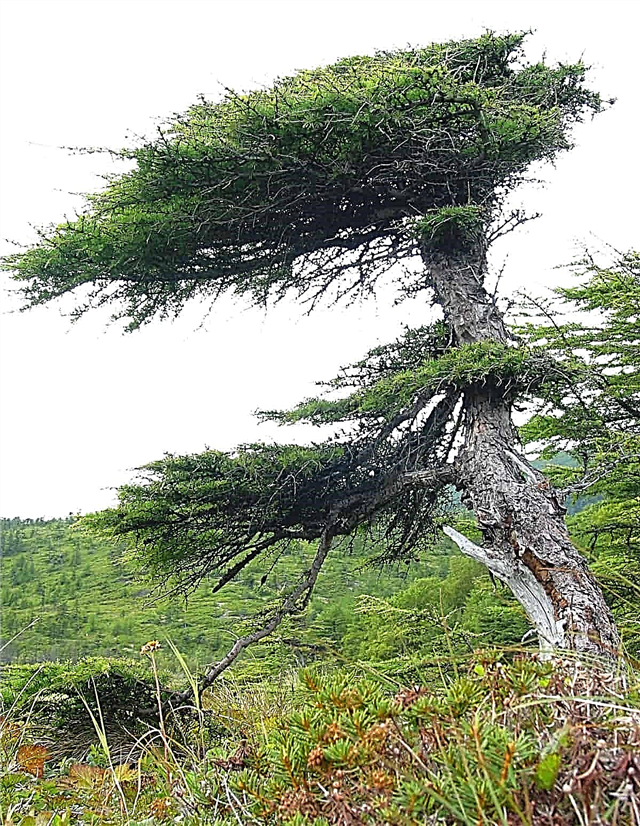
Larch on the seashore
As a rule, the site is zoned, carefully choosing plants for the center of each composition in the garden center or in the catalog. Consider the fact that conifers must be stable in your area and climate zone..
When composing compositions, choose combinations that are usually found in nature - for example, larch and cedar dwarf pine, ordinary pine and juniper.
The advantage of using conifers
There are two main reasons why conifers are popular in landscaping private gardens. First, they retain a green "outfit" 12 months a year. Green needles remain on the branches even in the most severe frosts, so that the landscape with pines, spruces, junipers and other representatives of conifers always looks at 5 plus.

Secondly, most conifers are not demanding to care for. If the land in the garden is not highly fertile, they will grow well on sandy and rocky soil. Well-rooted plants easily tolerate subzero temperatures, and in dry summers they cost minimal watering.

A big advantage of conifers is a small annual growth. This feature allows you to create compositions that remain stable for several years. To maintain the garden unchanged, only a light haircut that supports the shape of the crown is required.

The advantages can also include non-moodiness in relation to neighbors. They do not care what grows nearby: roses, annuals, deciduous shrubs. The main thing is that this vegetation responds well to the presence of conifers and suits the design of the garden.
Important. There is something that conifers do not like - closely growing deciduous large-sized trees with a spreading crown. In their shade, spruce and pine are elongated, the lower branches lose their needles and are exposed.
Conifers for the garden
Almost all conifers are suitable for creating artificial landscapes. But what kind of species are suitable for the design of a particular territory depends on the area of the site, the degree of its shade, the features of the relief and the type of soil. Garden design should also be taken into account when selecting vegetation, but it should be noted that conifers naturally look in any landscape style.
What conifers to plant in the garden?
There are two methods of buying conifers, and indeed any other plants. First: the features of the site are studied (the degree of shading, soil moisture, the area reserved for the ornamental garden), and then suitable plant species are purposefully acquired. This method of selecting vegetation is correct. But it’s wrong to buy any species you like, without correlating the conditions in which the plants will grow with their needs.
Common types of "dwarfs"
- Picea abies little gem - ordinary spruce with an annual growth of 2 cm. At the age of 10 years reaches 50 cm, has the shape of an irregular ball,

- Picea glauca laurin - Canadian spruce conical shape, upon reaching 10 years, its growth is only 40 cm,

- Pinus mugo gnom - mountain pine, grows to 1 m by 10 years old,

- Pinus mugo mops - mountain pine with a rounded crown, grows to 10 years to 50 cm,
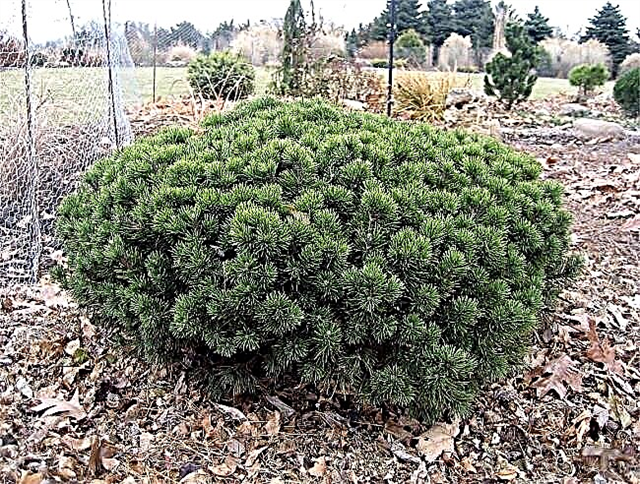
- Pinus mugo ophir - mountain pine with a spherical crown, for 10 years the growth is 50 cm,
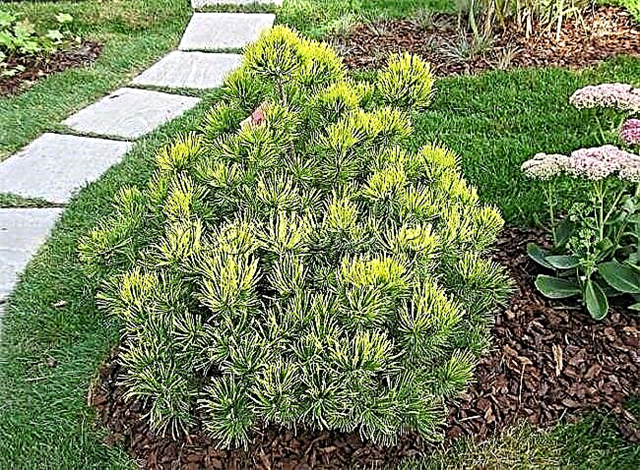
- Abies balsamea nana - balsam fir

- Abies koreana tundra - Korean fir with bright green fresh needles,
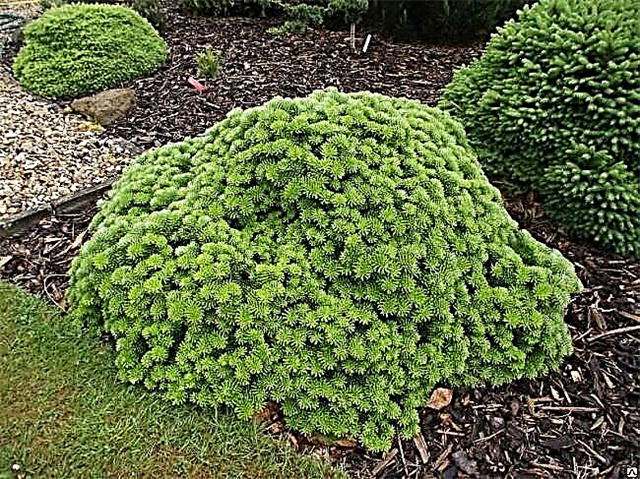
- Larus deciduas (dwarf larch) Kornik, Marta Radek and Compacta,
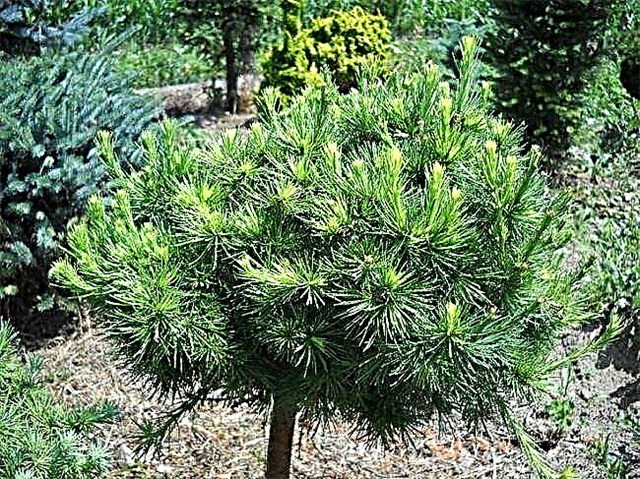
- Picea abies wills zwerg - spruce of traditional conical shape, growing up to 120 cm.
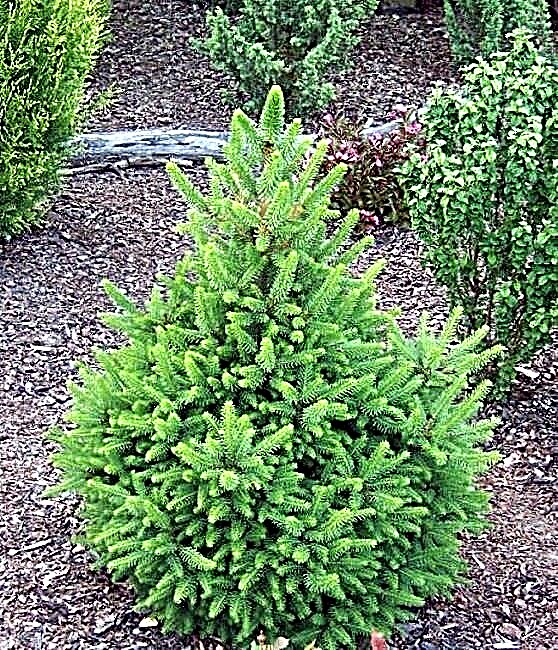
Coniferous bushes for a summer residence
Unlike dwarf forms, coniferous shrubs require less attention, and that is why they can often be found in the decorative gardens of summer cottages. The most famous of them is juniper medium (Juniperus pfitzeriana).
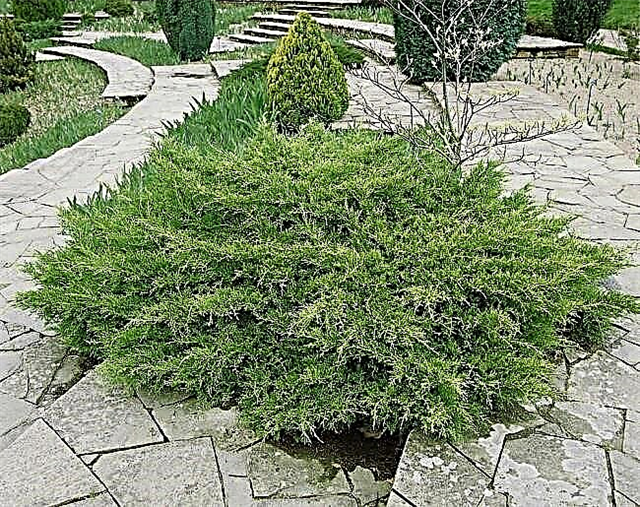 Juniperus pfitzeriana
Juniperus pfitzeriana
Its dense branches do not grow upward, but parallel to the soil, so that one plant covers a fairly vast area. Depending on the variety, the needles are painted in dark or light green, may also have a blue tint. In addition, the variety is bred. Aurea with the tops of young shoots of golden color.

Shrub species of virgin juniper (Juniperus virginiana) are beautiful with their lush branches, directed upward at an angle of 45. The upper part of the shoots slightly wilts, giving juniper a special charm.

Mountain pine Mugus in essence, it is a tree, in adulthood, reaching a height of almost 3 meters, but because of the wide crown it resembles a large sprawling bush. Short shoots with bright green needles are directed upwards, which gives the plant a special charm. Pine Mugus is drought-resistant, loves sunny places, and lends itself well to forming pruning.

Spruce Maxwelli possesses a spreading crown up to 2 m wide with a growth of 1 m. Annual growth is very small, and the plant reaches its "adult" size only by the age of 15 years. This feature is used in the preparation of static compositions that do not require human intervention for a long time.

Juniperus vulgaris (Juniperus communis) Hornibrookii - a shrub with branches pressed to the soil, located in several tiers. In adulthood, the height of the plant is only 60 cm, while the crown is spread over 3 m. The needles are green with a silver tint. It is used as a groundcover plant on the slopes, for decorating rocky slides.

Microbiota - very similar to creeping juniper, but is a separate species. Chic crown consists of highly branched shoots, densely strewn with small soft needles. It grows very slowly, only 2 cm per season, is used to create mountain landscapes, beautiful green curtains on the background of deciduous shrubs.

Cypress - Used by landscape designers on a par with other conifers. There are many subspecies of cypress, but bush-shaped forms are more interesting for decorative landscaping.
Cypress garden:
- Nana - squat pillow-shaped bushes with small bluish needles. An adult plant does not exceed 60 cm in height,
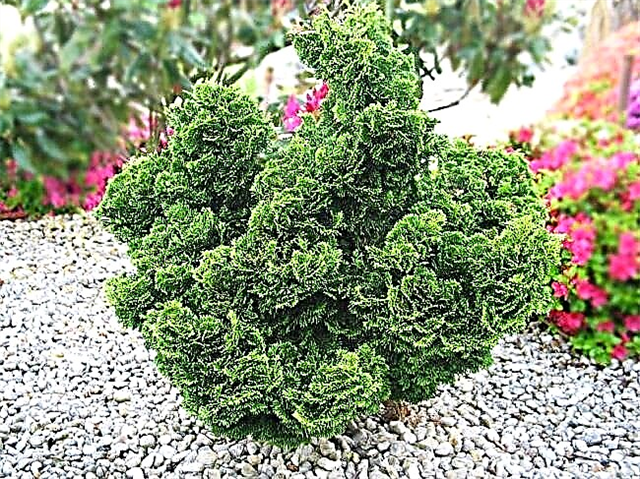
- Endeliensis - a round-shaped bush 2.5 m high, needles are dense, green with a blue tint, the branches are slightly fan-shaped,
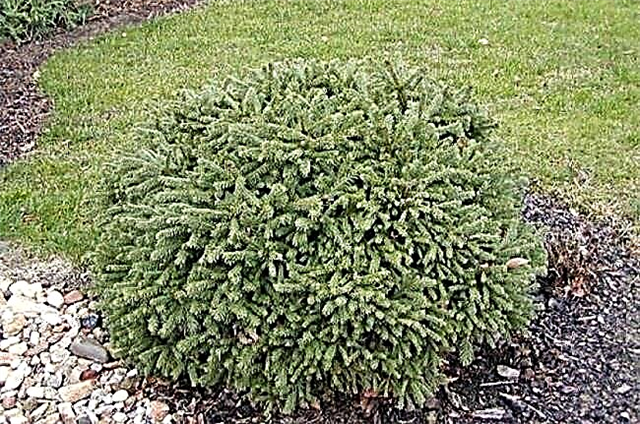
- Albopikta - the branches grow almost horizontally, the needles are light green with yellowish tips. The height of an adult bush is 2 m.

Conifers in the garden landscape
The versatility of conifers makes it possible to use them in many landscape compositions. The size of the summer cottage is not an obstacle for this, since compact forms of conifers are planted in a small area, which in certain situations look more advantageous in comparison with large-sized ones. They are planted in Japanese mini-kindergartens, on alpine hills, as well as potted plants in the mobile gardening of paved courtyards, patios, terraces.

Since most conifers grow slowly, they are an excellent material for creating evergreens. Seedlings of the same species form the same crown, making it much easier to cut a “prickly” living fence than deciduous shrubs. In addition, thuja and junipers are used in topiary art: from them are obtained geometric shapes of perfect shape: ball, cube, cone, pyramid, column.
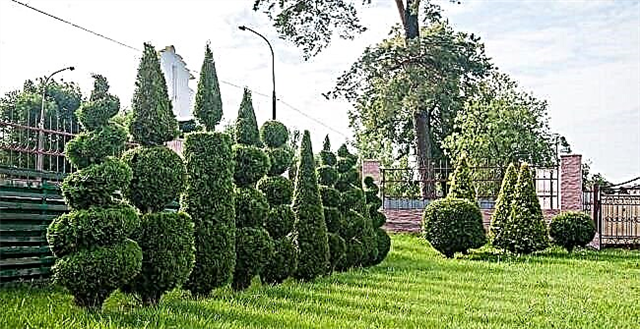 Thuja topiary haircut
Thuja topiary haircut
Mixborders with coniferous vegetation are attractive in summer, demi-season and winter. Dwarf spruce and pine trees are planted in the center of the composition, like accent details, and creeping juniper forms are used to fill the free space between roses, hydrangea and other flowering shrubs.

Medium-sized conifers are used to create the background for colorful mixborders and other types of flower beds. Planted along the border of the site, they form a picturesque freely growing hedge of high density, through which it is not only impossible to see anything, but even difficult to get through without injuring yourself.
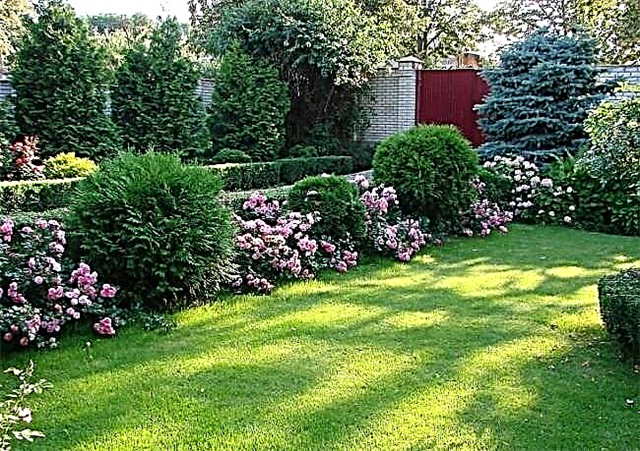
The subtleties of caring for conifers
How much the decorative qualities of a coniferous plant are revealed directly depends on the proper planting and care during the first years of its life. Even the purchase of seedlings is carried out according to certain rules.
9 tips for planting and growing conifers:

- Seedlings should be bought only in containers, in an exceptional case, with a closed lump of land on the roots,
- It is better to purchase seedlings from the nearest nursery, where they have already passed the primary acclimatization to local agro-climatic conditions,
- The root neck during planting is located a few centimeters above the soil level,
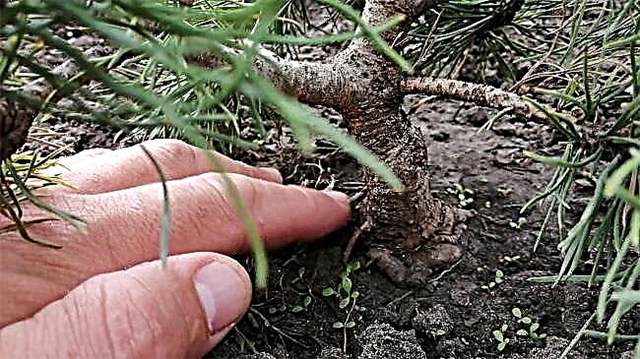
- Young seedlings are planted in the spring so that they can take root by autumn, and adult plants are transplanted during the dormant period, even in winter,
- After planting, young plants need abundant watering throughout the season,
- All conifers do not like stagnation of moisture and marshy areas, so the landing pit is drained,
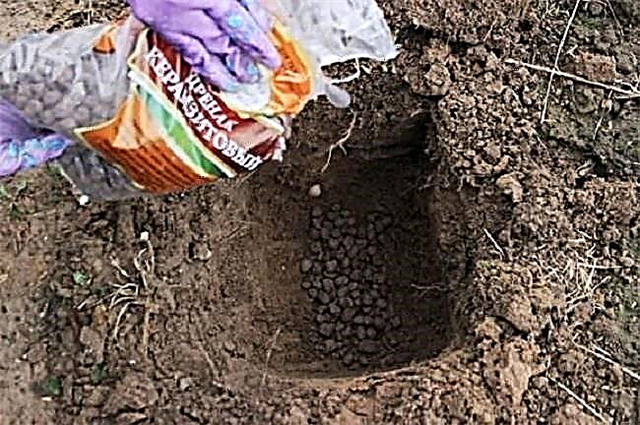 We use expanded clay for this
We use expanded clay for this
In addition, you should take into account the characteristics of the cultivation of each particular species. For example, attention is paid to dwarf forms constantly, and tall trees after final rooting do not require special care, except for sanitary pruning. More time is allocated for the care of the topiary, since their shape should be controlled by systematically cutting.
Video from our specialist:














